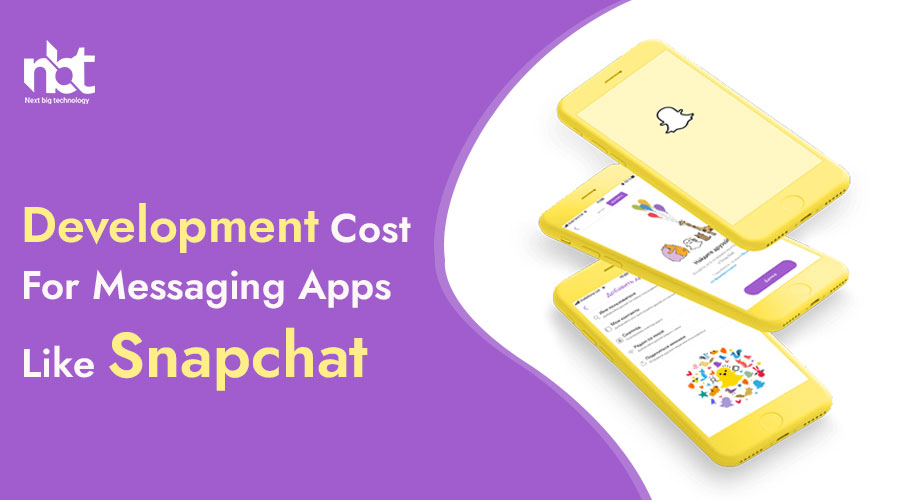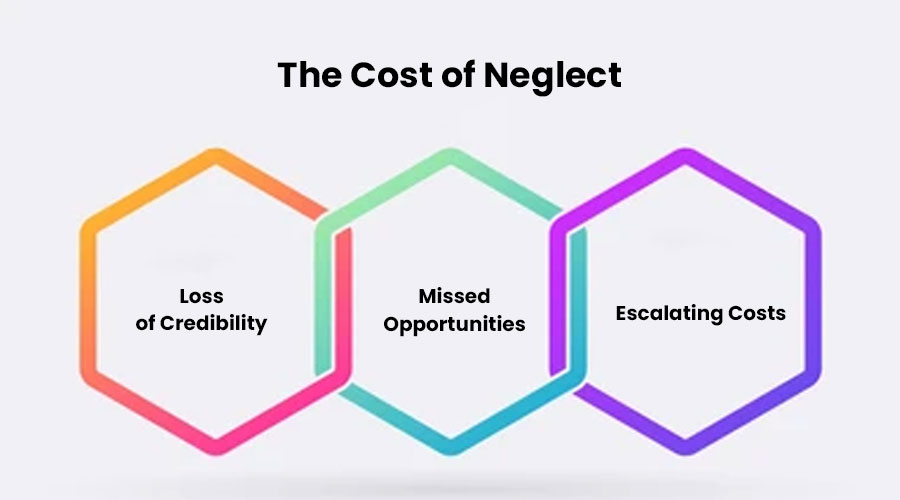Table of Contents
Understanding the Initial Investment
In the world of finance and entrepreneurship, the term “initial investment” holds paramount significance. It serves as the cornerstone of any venture, delineating the path toward prosperity or peril. Understanding the nuances of initial investment is indispensable for individuals, businesses, and investors alike. In this comprehensive guide, we delve into the intricacies of initial investment, elucidating its significance, types, and strategies.
The Significance of Initial Investment: At its core, the initial investment represents the capital injected into a business or project at its inception. This capital infusion facilitates the acquisition of essential resources, such as equipment, inventory, or human capital, enabling the venture to commence operations. Moreover, the initial investment plays a pivotal role in shaping the trajectory of the venture, influencing its growth, profitability, and sustainability.
Types of Initial Investment: Initial investments manifest in various forms, each tailored to the unique needs and objectives of the venture. Equity investment involves exchanging capital for ownership stakes in the business, granting investors a share of profits and decision-making authority. Debt financing, on the other hand, entails borrowing funds from external sources, promising repayment with interest over a specified period. Additionally, personal investment involves utilizing personal savings or assets to fund the venture, showcasing the founder’s commitment and dedication.
Factors Influencing Initial Investment: Several factors influence the magnitude and allocation of the initial investment. Market dynamics, including demand, competition, and industry trends, shape the feasibility and potential returns of the venture. Furthermore, the scalability and growth prospects of the business influence investors’ willingness to commit capital. Additionally, regulatory requirements, economic conditions, and technological advancements contribute to the investment decision-making process, necessitating thorough analysis and due diligence.
Strategies for Optimizing Initial Investment: Maximizing the efficacy of the initial investment requires prudent planning and strategic foresight. Conducting comprehensive market research enables entrepreneurs to identify lucrative opportunities and mitigate potential risks. Moreover, implementing stringent financial management practices ensures efficient allocation and utilization of resources, bolstering the venture’s profitability and resilience. Furthermore, forging strategic partnerships and leveraging networks can augment the initial investment, fostering innovation and market penetration.
Core Features and Functionality
In the ever-evolving landscape of technology, the bedrock of any successful innovation lies in its core features and functionality. These fundamental aspects not only define the essence of a product but also determine its usability, effectiveness, and ultimately its success in the market. Let’s delve into the intricacies of core features and functionality and understand their significance in today’s tech-driven world.
- User-Centric Design: At the heart of every technological marvel, lies a user-centric design approach. Whether it’s a mobile application, a website, or a hardware device, prioritizing user experience ensures that the product resonates with its intended audience. Intuitive navigation, visually appealing interfaces, and seamless interactions are some hallmarks of user-centric design that enhance usability and drive engagement.
- Scalability and Flexibility: In a dynamic environment where requirements evolve rapidly, scalability and flexibility are paramount. Technologies that can adapt to changing needs, accommodate growth, and integrate seamlessly with existing systems offer a competitive edge. Whether it’s cloud-based solutions, modular architectures, or scalable databases, the ability to scale up or down as per demand ensures longevity and sustainability.
- Reliability and Stability: Dependability is non-negotiable when it comes to technology. Users expect systems to be available round the clock, with minimal downtime and glitches. Robustness in design, redundant systems, and proactive monitoring mechanisms are essential to ensure reliability and stability. Whether it’s an e-commerce platform processing transactions or a mission-critical application handling sensitive data, reliability instills trust and fosters customer loyalty.
- Security and Compliance: With cyber threats on the rise, security is no longer an afterthought but a primary consideration in technology implementations. From safeguarding user data to protecting against external attacks, robust security measures are imperative. Compliance with industry standards and regulations such as GDPR, HIPAA, or PCI-DSS not only mitigates legal risks but also enhances trust and credibility among users.
- Performance Optimization: In a world where speed is of the essence, performance optimization plays a pivotal role. Whether it’s reducing load times, optimizing code, or fine-tuning algorithms, every aspect contributes to enhancing performance. Technologies like caching, content delivery networks (CDNs), and load balancing ensure that applications perform optimally even under peak loads, delivering a seamless user experience.
- Interoperability and Integration: In an ecosystem where multiple technologies coexist, interoperability and integration are indispensable. Seamless integration with third-party services, APIs, and platforms enables enhanced functionality and unlocks new possibilities. Whether it’s integrating with social media platforms for seamless sharing or connecting with IoT devices for data collection, interoperability fosters innovation and collaboration.
- Analytics and Insights: Data is the new currency in today’s digital age, and harnessing its power is key to unlocking valuable insights. Core features that enable data collection, analysis, and visualization empower businesses to make informed decisions. From tracking user behavior to measuring key performance indicators (KPIs), analytics-driven insights drive continuous improvement and innovation.
- Accessibility and Inclusivity: Technology should be accessible to all, irrespective of physical abilities or limitations. Core features that prioritize accessibility, such as screen readers, keyboard navigation, and color contrast adjustments, ensure inclusivity for all users. By embracing accessibility standards like WCAG (Web Content Accessibility Guidelines), technology becomes more inclusive, opening doors to a wider audience.
Design and User Interface Costs
In the ever-evolving digital landscape, where user experience reigns supreme, investing in design and user interface (UI) has become imperative for businesses aiming to thrive in the competitive market. However, understanding the costs associated with design and UI development is crucial for making informed decisions and maximizing returns on investment.
The Importance of Design and User Interface
Design and user interface play a pivotal role in shaping the perception of a product or service. An intuitive and visually appealing UI not only attracts users but also enhances their interaction and overall experience. A well-designed interface can lead to increased user engagement, higher retention rates, and ultimately, improved conversion rates.
Factors Influencing Design and UI Costs
Several factors influence the costs associated with design and UI development:
Scope and Complexity of the Project
The scope and complexity of the project significantly impact the costs involved. Projects requiring extensive research, prototyping, and custom designs are likely to incur higher expenses compared to simpler projects with predefined requirements.
Team Expertise and Experience
The expertise and experience of the design team also influence costs. Experienced designers with a proven track record may charge higher fees, but their expertise often leads to superior results and a more efficient development process.
Iterations and Revisions
Iterations and revisions are common in the design process as client feedback and user testing often necessitate changes. The number of iterations required can affect costs, especially if they involve significant design modifications or additions.
Platform Compatibility
Designing for multiple platforms, such as web, mobile, and desktop, may incur additional costs due to the need for platform-specific optimizations and adaptations. Each platform has its unique design guidelines and technical requirements that must be considered.
Integration with Third-party Tools or Systems
If the project requires integration with third-party tools or systems, such as payment gateways or analytics platforms, additional development efforts may be needed, leading to increased costs.
Maintenance and Updates
Post-launch maintenance and updates are essential for ensuring the longevity and relevance of the design and UI. Factoring in ongoing maintenance costs is crucial for sustaining optimal performance and user satisfaction over time.
Cost Optimization Strategies
While design and UI development are investments, there are strategies to optimize costs without compromising quality:
- Prioritize Features: Focus on essential features and functionalities to avoid unnecessary complexity and associated costs.
- Utilize Prototyping: Prototyping allows for early feedback and iteration, reducing the likelihood of costly design changes later in the development process.
- Consider Outsourcing: Outsourcing design and UI development to specialized agencies or freelancers can be cost-effective, especially for short-term projects or when specific expertise is required.
- Embrace Agile Methodologies: Agile methodologies promote iterative development and close collaboration between stakeholders, resulting in more efficient processes and reduced development costs.
Integration of Multimedia Capabilities
In today’s digital landscape, where content is king, integrating multimedia capabilities has become paramount for businesses aiming to captivate audiences and drive engagement. As technology continues to evolve, the demand for immersive and interactive content experiences is on the rise. From websites to social media platforms, the integration of multimedia elements such as videos, images, audio, and animations has proven to be a game-changer in attracting and retaining users’ attention.
Multimedia content holds a unique appeal due to its ability to convey information in various formats simultaneously, catering to different learning styles and preferences. By incorporating visuals, sounds, and interactive elements into their content strategy, businesses can deliver messages more effectively and leave a lasting impression on their target audience.
One of the key advantages of integrating multimedia capabilities is its ability to enhance storytelling. Whether it’s through compelling videos that showcase products in action or interactive presentations that guide users through a narrative, multimedia allows brands to create memorable experiences that resonate with their audience on a deeper level. By leveraging the power of sight, sound, and motion, businesses can evoke emotions, convey brand messages, and build stronger connections with their customers.
Moreover, multimedia content has proven to be highly shareable across digital platforms, making it an invaluable asset for increasing brand visibility and reach. With social media algorithms prioritizing engaging content, posts featuring multimedia elements are more likely to garner likes, shares, and comments, thereby amplifying brand exposure and driving traffic to businesses’ digital properties.
Furthermore, integrating multimedia capabilities can significantly enhance the effectiveness of educational and training materials. By incorporating interactive videos, simulations, and animations into e-learning modules, educators and trainers can create dynamic and engaging learning experiences that facilitate better comprehension and retention of information. This approach not only makes learning more enjoyable but also fosters active participation and knowledge retention among learners.
From a marketing perspective, multimedia content has proven to be a powerful tool for driving conversions and sales. High-quality product videos, virtual tours, and interactive demos can provide potential customers with a more immersive and realistic view of products or services, leading to increased confidence and purchase intent. By showcasing products in a visually appealing and interactive manner, businesses can overcome barriers such as lack of physical access and instill trust in their offerings.
Data Security Measures and Compliance Costs
In today’s digital age, data security has become paramount for businesses of all sizes. With cyber threats looming large and regulatory requirements tightening, organizations must prioritize implementing robust data security measures while balancing the associated compliance costs. This delicate equilibrium between safeguarding sensitive information and managing expenses is crucial for maintaining trust with customers, avoiding costly data breaches, and adhering to legal mandates.
Understanding Data Security Measures
Data security encompasses a range of protective measures designed to ensure the confidentiality, integrity, and availability of information. From encryption and access controls to regular audits and employee training, businesses employ a multifaceted approach to safeguard their data assets.
- Encryption: Encrypting sensitive data both at rest and in transit is fundamental to preventing unauthorized access. Strong encryption algorithms scramble data into unreadable formats, ensuring that even if a breach occurs, the stolen information remains unintelligible to attackers.
- Access Controls: Limiting access to sensitive data on a need-to-know basis minimizes the risk of insider threats and unauthorized disclosures. Role-based access controls (RBAC) and multi-factor authentication (MFA) help enforce strict access policies, ensuring that only authorized personnel can view or modify sensitive information.
- Regular Audits and Monitoring: Continuous monitoring and regular audits help detect and mitigate security vulnerabilities proactively. By monitoring network traffic, user activities, and system logs, organizations can identify suspicious behavior and take corrective actions before potential breaches occur.
Compliance Costs and Regulatory Frameworks
Compliance with data protection regulations is not only a legal requirement but also a critical component of maintaining trust and credibility with customers. However, achieving compliance often comes with substantial financial implications, including implementation costs, audit fees, and potential fines for non-compliance.
- GDPR (General Data Protection Regulation): The GDPR, applicable to businesses operating within the European Union (EU), imposes stringent requirements for the processing and protection of personal data. Achieving GDPR compliance involves investing in data encryption, privacy impact assessments, and robust data governance frameworks.
- HIPAA (Health Insurance Portability and Accountability Act): Healthcare organizations in the United States must comply with HIPAA regulations to safeguard patients’ protected health information (PHI). Ensuring HIPAA compliance entails implementing secure communication channels, access controls, and encryption protocols to protect sensitive medical data.
- PCI DSS (Payment Card Industry Data Security Standard): Businesses that handle credit card transactions must adhere to PCI DSS requirements to protect cardholder data from theft and fraud. PCI DSS compliance involves investing in secure payment processing systems, regular security assessments, and network segmentation to isolate cardholder data from other network resources.
Striking a Balance
While data security and compliance entail significant costs, the consequences of inadequate protection far outweigh the investment required. A data breach can result in financial losses, reputational damage, and legal liabilities that far exceed the initial expenses of implementing security measures.
To strike a balance between security and cost-effectiveness, organizations can adopt a risk-based approach to prioritize investments in areas with the highest potential impact. Conducting comprehensive risk assessments helps identify vulnerabilities and assess the likelihood and potential impact of security incidents, enabling informed decision-making regarding resource allocation.
Moreover, leveraging automation and cloud-based security solutions can streamline security operations and reduce overhead costs associated with manual processes. Cloud providers offer scalable and cost-effective security services, such as managed detection and response (MDR) and security information and event management (SIEM), allowing organizations to enhance their security posture without significant upfront investments.
Monetization Strategies and Implementation Costs
In today’s dynamic digital landscape, monetization strategies have become imperative for individuals and businesses alike. Whether you’re a content creator, a startup entrepreneur, or a seasoned corporation, effectively monetizing your offerings can significantly impact your bottom line. However, understanding the diverse array of strategies available and accurately assessing the associated implementation costs are crucial steps toward success.
Unveiling Monetization Strategies:
1. Advertising:
- Display Ads: Placing banner ads or pop-ups on your website or app.
- Native Ads: Seamlessly integrating promotional content into your platform.
- Video Ads: Monetizing through pre-roll, mid-roll, or post-roll video advertisements.
2. Subscription Models:
- Tiered Subscriptions: Offering different levels of access or features at varying price points.
- Membership Programs: Providing exclusive content or perks to paying members.
- Paywalls: Restricting access to premium content behind a payment barrier.
3. Affiliate Marketing:
- Promoting Products: Earning commissions by driving sales or leads to other businesses.
- Influencer Partnerships: Collaborating with influencers to endorse products or services.
4. E-commerce:
- Selling Products: Establishing an online store to sell physical or digital goods.
- Dropshipping: Partnering with suppliers to fulfill orders on demand without inventory investment.
5. Freemium Model:
- Basic Services for Free: Offering a limited version of your product or service for free while charging for advanced features or upgrades.
Evaluating Implementation Costs:
Implementing monetization strategies involves various tangible and intangible expenses. Here’s a breakdown:
1. Development Costs:
- Platform Modification: Tailoring your website or app to accommodate ads, subscription systems, or e-commerce functionalities.
- Integration of Third-Party Services: Utilizing ad networks, payment gateways, or affiliate platforms may incur setup fees or ongoing charges.
2. Content Creation Expenses:
- Quality Content: Investing in creating compelling and valuable content to attract and retain audiences.
- Design and Multimedia: Developing visually appealing ads, promotional materials, or product images/videos.
3. Marketing and Promotion:
- User Acquisition: Allocating funds for advertising campaigns to drive traffic and acquire users.
- SEO and SEM: Enhancing visibility through search engine optimization and search engine marketing strategies.
4. Infrastructure and Maintenance:
- Hosting and Server Costs: Scaling up your hosting infrastructure to accommodate increased traffic and transactions.
- Security Measures: Implementing robust security protocols to safeguard sensitive data and transactions.
5. Analytics and Optimization:
- Tracking Tools: Investing in analytics platforms to monitor user behavior, engagement metrics, and revenue performance.
- Iterative Improvements: Allocating resources for continuous optimization based on data insights.
Scalability and Future Growth Considerations
In today’s fast-paced digital landscape, scalability isn’t just a buzzword; it’s a crucial factor for businesses aiming to thrive in the long term. As companies expand and evolve, their ability to scale efficiently becomes paramount. However, achieving scalability requires careful planning and consideration of various factors, including technology, infrastructure, and organizational structure.
Understanding Scalability
Scalability refers to a company’s capacity to handle growth without compromising performance or quality. It involves more than just increasing the size of operations; it’s about doing so in a sustainable and cost-effective manner. Whether it’s accommodating a growing customer base, expanding into new markets, or adding new products or services, scalability ensures that a business can adapt and thrive amidst change.
Key Considerations for Scalability and Future Growth
1. Flexible Technology Infrastructure
Investing in a flexible and adaptable technology infrastructure is essential for scalability. Cloud computing, for example, offers scalability on-demand, allowing businesses to scale resources up or down as needed. Embracing modular and scalable software solutions enables smoother integration and upgrades, reducing the risk of disruption during periods of growth.
2. Scalable Business Processes
Scalability isn’t just about technology—it’s also about optimizing business processes to accommodate growth. Streamlining workflows, implementing scalable systems for customer support and operations, and establishing clear communication channels are vital for maintaining efficiency as the business expands. Automation can play a significant role in scaling processes while minimizing manual effort and errors.
3. Talent and Organizational Structure
As organizations grow, so do their talent needs. Recruiting and retaining skilled employees who can adapt to evolving roles and responsibilities are crucial for scalability. Additionally, fostering a culture of innovation and agility encourages employees to embrace change and contribute to the company’s growth initiatives. An adaptable organizational structure that encourages collaboration and cross-functional communication is also essential for scalability.
4. Data-Driven Decision Making
Harnessing the power of data is instrumental in driving scalable growth. By collecting and analyzing relevant data, businesses can gain insights into customer behavior, market trends, and performance metrics. These insights enable informed decision-making, allowing companies to identify growth opportunities, optimize processes, and allocate resources effectively.
5. Financial Planning and Resource Allocation
Scalable growth requires careful financial planning and resource allocation. Allocating capital efficiently, managing cash flow, and forecasting revenue are critical aspects of scalability. Additionally, securing funding or investment to support growth initiatives may be necessary, whether through traditional avenues like loans and venture capital or alternative methods like crowdfunding.
Development Team Composition and Hiring Costs
In the rapidly evolving landscape of technology, the success of any software development project hinges significantly on the composition of the development team. From startups to multinational corporations, the process of assembling the right mix of talent is pivotal. However, along with expertise and experience, another crucial factor that often shapes decisions is the associated hiring costs.
Understanding Development Team Composition:
Building an effective development team involves a careful blend of skills, roles, and personalities. While the specific composition may vary depending on project requirements, certain key roles are integral to most teams:
- Project Manager: Acts as the captain of the ship, ensuring smooth coordination, resource allocation, and timely delivery.
- Software Engineers/Developers: The backbone of the team, responsible for coding, testing, and implementing software solutions.
- Quality Assurance (QA) Engineers: Focus on testing the software to identify bugs, ensure functionality, and maintain quality standards.
- UX/UI Designers: Responsible for creating intuitive and visually appealing user interfaces to enhance user experience.
- DevOps Engineers: Handle the integration, deployment, and automation of software development processes.
Besides these core roles, teams may include specialists such as data scientists, cybersecurity experts, or domain-specific professionals based on project requirements.
Factors Influencing Hiring Costs:
- Experience and Expertise: Highly experienced professionals command higher salaries due to their track record and expertise. Junior developers, while more affordable, may require more supervision and training.
- Location: Hiring costs vary significantly based on the geographical location of the talent pool. For instance, developers in tech hubs like Silicon Valley demand higher salaries compared to those in emerging tech markets.
- Freelancers vs. Full-time Employees: Opting for freelancers or contractors can offer flexibility and cost savings, especially for short-term projects. However, hiring full-time employees provides greater stability and commitment but entails higher long-term costs.
- Specialized Skills: Professionals with niche skills or expertise in cutting-edge technologies often command premium rates due to their scarcity in the market.
- Recruitment Channels: Utilizing specialized recruitment agencies or platforms may incur additional costs in the form of commissions or subscription fees.
Strategies for Cost Optimization:
- Remote Teams: Embracing remote work allows access to a global talent pool, potentially reducing costs while ensuring access to diverse skill sets.
- Outsourcing: Leveraging outsourcing partners, particularly in regions with lower labor costs, can offer significant savings without compromising quality.
- Flexible Work Arrangements: Offering flexible work arrangements, such as part-time or contract-based roles, can help optimize costs while retaining top talent.
- Invest in Training: Developing in-house talent through training programs and upskilling initiatives not only reduces hiring costs but also fosters employee loyalty and engagement.
- Streamlined Recruitment Process: Optimizing the recruitment process to reduce time-to-hire and minimize administrative overheads can result in cost savings in the long run.
Platform Compatibility and Cross-Device Development
In today’s tech-driven world, where the diversity of devices and platforms continues to expand, ensuring compatibility across different platforms and devices has become paramount for developers. From smartphones and tablets to desktop computers and wearables, users expect seamless experiences regardless of the device they are using. This necessitates a deep understanding of platform compatibility and efficient cross-device development strategies.
Understanding Platform Compatibility
Platform compatibility refers to the ability of a software application or website to function optimally across various operating systems (OS), browsers, and devices. It involves addressing differences in hardware capabilities, screen sizes, input methods, and software environments. Failing to achieve platform compatibility can result in user frustration, decreased engagement, and negative reviews.
Key factors to consider for platform compatibility include:
- Operating Systems (OS): Major OS platforms include iOS, Android, Windows, macOS, and Linux. Each has its unique characteristics and requirements, necessitating tailored development approaches.
- Browsers: With a plethora of web browsers available, developers must ensure their web applications render consistently across popular choices such as Chrome, Firefox, Safari, and Edge.
- Screen Sizes and Resolutions: Devices come in various screen sizes and resolutions, from small smartphones to large desktop monitors. Responsive design techniques enable content to adapt seamlessly to different screen sizes, ensuring a consistent user experience.
- Input Methods: Devices may utilize different input methods, including touchscreens, keyboards, mice, styluses, and voice commands. Applications should accommodate these variations without compromising usability.
Strategies for Cross-Device Development
Cross-device development involves creating applications or websites that function well across multiple devices and platforms. Here are some effective strategies to achieve this:
- Utilize Cross-Platform Development Frameworks: Cross-platform development frameworks like React Native, Xamarin, and Flutter enable developers to write code once and deploy it across multiple platforms. These frameworks abstract platform-specific intricacies, streamlining development efforts.
- Responsive Web Design: Embrace responsive web design principles to create websites that adapt fluidly to different screen sizes and orientations. Flexible grids, images, and media queries ensure optimal rendering on various devices, reducing the need for device-specific versions.
- Progressive Web Apps (PWAs): PWAs combine the best features of web and mobile applications, offering a responsive, app-like experience across devices. They leverage modern web technologies to provide offline functionality, push notifications, and home screen installation, enhancing user engagement.
- APIs and Standards: Adhere to established APIs and web standards to ensure interoperability across platforms. Embracing technologies like HTML5, CSS3, and JavaScript ES6+ fosters compatibility and future-proofs applications against evolving platform requirements.
- User Testing Across Devices: Conduct rigorous testing across various devices, browsers, and OS versions to identify and address compatibility issues early in the development cycle. Automated testing tools and device farms can help streamline this process.
Maintenance and Updates Over Time
In the fast-paced digital landscape, where technology evolves at the blink of an eye, websites, software, and digital platforms can quickly become outdated and ineffective without proper maintenance and updates. Just like a well-oiled machine, maintaining and updating digital assets is crucial for optimal performance, security, and relevance over time.
Why Maintenance Matters:
- Security Reinforcement: Cyber threats are constantly evolving, and outdated software is a prime target for hackers. Regular maintenance ensures that security patches are applied promptly, minimizing vulnerabilities and safeguarding sensitive data from breaches.
- Enhanced Performance: Over time, as technologies advance, older systems may struggle to keep up with the demands of modern users. Regular maintenance helps optimize performance, ensuring swift loading times, smooth functionality, and a seamless user experience.
- Bug Squashing: Software bugs can plague even the most meticulously crafted programs. Regular updates not only fix existing bugs but also prevent new ones from emerging, ensuring that your digital assets operate flawlessly.
- Compatibility Assurance: With the plethora of devices, browsers, and operating systems available today, ensuring compatibility across various platforms is paramount. Regular updates help adapt digital assets to changing technological landscapes, guaranteeing a consistent user experience across different devices and platforms.
The Evolution of Content:
- Relevance Refresh: Content is king in the digital realm, but what was relevant yesterday may not be so tomorrow. Regular updates to content keep it fresh, engaging, and aligned with evolving trends, ensuring continued interest from your audience.
- SEO Optimization: Search engine algorithms are constantly evolving, and what may have boosted your ranking yesterday might be detrimental today. Regularly updating content with relevant keywords, optimized meta tags, and fresh information helps maintain visibility in search engine results pages (SERPs).
- Audience Engagement: Engaging your audience is crucial for building brand loyalty and driving conversions. Regularly updating content provides opportunities to interact with your audience, solicit feedback, and tailor your offerings to meet their evolving needs and preferences.
The Cost of Neglect:
- Loss of Credibility: Outdated websites or software can convey a message of neglect or incompetence to your audience. In today’s competitive landscape, maintaining a polished and up-to-date digital presence is essential for instilling trust and credibility in your brand.
- Missed Opportunities: In the digital world, opportunities come and go in the blink of an eye. Neglecting maintenance and updates can result in missed opportunities for growth, innovation, and staying ahead of the competition.
- Escalating Costs: Delaying maintenance and updates may save costs in the short term, but it often leads to more significant expenses down the line. Addressing issues promptly through regular maintenance is not only more cost-effective but also helps prevent costly downtime and data breaches.
Top Messaging Apps Like Snapchat Development Companies
In today’s digital era, messaging apps have become an indispensable part of our daily lives, reshaping the way we communicate and connect with others. Among these, Snapchat has emerged as a pioneer, revolutionizing the concept of messaging with its ephemeral nature and innovative features. However, Snapchat is not the only player in the field. Several other messaging apps have risen to prominence, each offering its unique set of features and functionalities. In this article, we delve into the top messaging apps like Snapchat and the development companies behind their success.
-
-
Next Big Technology:

Focus Area
- Mobile App Development
- App Designing (UI/UX)
- Software Development
- Web Development
- AR & VR Development
- Big Data & BI
- Cloud Computing Services
- DevOps
- E-commerce Development
Industries Focus
- Art, Entertainment & Music
- Business Services
- Consumer Products
- Designing
- Education
- Financial & Payments
- Gaming
- Government
- Healthcare & Medical
- Hospitality
- Information Technology
- Legal & Compliance
- Manufacturing
- Media
-
- Telegram:
- Telegram gained popularity for its emphasis on security and privacy. Offering features like secret chats, self-destructing messages, and cloud-based storage, Telegram provides a platform for secure communication.
- Development Company: Founded by Pavel Durov, Telegram Messenger LLP is headquartered in London. The company prides itself on its commitment to privacy and has remained independent of larger tech conglomerates.
- Signal:
- Signal has gained traction as one of the most secure messaging apps, known for its robust encryption protocols and commitment to user privacy. Endorsed by privacy advocates and even used by whistleblowers and journalists, Signal ensures that conversations remain confidential.
- Development Company: Signal Messenger LLC, formerly known as Open Whisper Systems, developed the Signal app. Moxie Marlinspike and Brian Acton are among the key figures behind the company’s mission to provide secure communication tools.
- WeChat:
- WeChat, often dubbed as China’s “super app,” offers far more than just messaging. It combines messaging, social media, mobile payment, and other functionalities, making it an integral part of daily life for millions of users in China and beyond.
- Development Company: Developed by Tencent Holdings Limited, one of China’s tech giants, WeChat has evolved into a comprehensive platform. Tencent’s expertise in software development and its vast user base have contributed to WeChat’s success.
- LINE:
- LINE, a Japanese messaging app, gained popularity for its wide array of features, including free voice and video calls, stickers, and games. With a strong presence in Asia, LINE has expanded its services to include digital payments, shopping, and more.
- Development Company: LINE Corporation, a subsidiary of the South Korean internet search giant Naver Corporation, is behind the development of LINE. The company’s innovative approach and focus on user engagement have propelled LINE to success.
These are just a few examples of messaging apps that have captured the attention of users worldwide. Behind the success of each of these apps lies a dedicated team of developers, engineers, and visionaries striving to create seamless and secure communication platforms.
FAQs On Messaging Apps Like Snapchat Development
In the dynamic world of social media, messaging apps like Snapchat have revolutionized how we communicate and connect with others. With their ever-evolving features and functionalities, it’s natural to have questions about their development process. Let’s delve into some frequently asked questions (FAQs) to shed light on Snapchat development:
1. What is Snapchat? Snapchat is a popular multimedia messaging app that allows users to send photos, videos, text, and drawings, which are known as “snaps.” One of its distinctive features is the ephemeral nature of snaps, which disappear after being viewed by the recipient.
2. How is Snapchat developed? Snapchat development involves various stages, including conceptualization, design, coding, testing, and deployment. Developers use programming languages like Objective-C, Java, and Python, along with frameworks such as React Native for cross-platform compatibility.
3. What are the key features of Snapchat?
Snapchat offers an array of features, including:
- Snap Creation: Users can capture photos and videos, add filters, stickers, text, and drawings to customize their snaps.
- Stories: Users can post snaps to their Stories, visible to their friends for 24 hours.
- Discover: A section where users can explore curated content from publishers, creators, and influencers.
- Lenses and Filters: Augmented reality (AR) effects that enhance snaps with animations and special effects.
- Chat: Instant messaging feature for one-on-one or group conversations.
- Snap Map: Allows users to share their location with friends and view Snaps from around the world.
4. How does Snapchat ensure privacy and security? Snapchat prioritizes user privacy and security through features like end-to-end encryption for messages, robust privacy settings, and regular security updates. Additionally, users have control over who can view their snaps and can report or block inappropriate content or users.
5. Can third-party developers create apps for Snapchat? Yes, Snapchat provides APIs (Application Programming Interfaces) and developer tools to enable third-party developers to create apps that integrate with Snapchat. These apps can leverage features like Bitmoji Kit, Creative Kit, and Login Kit to enhance user experience and functionality.
6. How does Snapchat monetize its platform? Snapchat generates revenue through various channels, including advertising, sponsored content, premium features, and in-app purchases. Brands can advertise on Snapchat through sponsored lenses, filters, ads, and Discover partnerships, targeting users based on demographics, interests, and behavior.
7. What is the future of Snapchat development? The future of Snapchat development is likely to focus on innovation in augmented reality (AR), enhanced user engagement features, content discovery, and community-building tools. With technology advancements and evolving user preferences, Snapchat will continue to adapt and evolve to stay relevant in the competitive social media landscape.
Thanks for reading our post “Development Cost For Messaging Apps Like Snapchat”. Please connect with us to learn more about Best Messaging Apps Like Snapchat.























